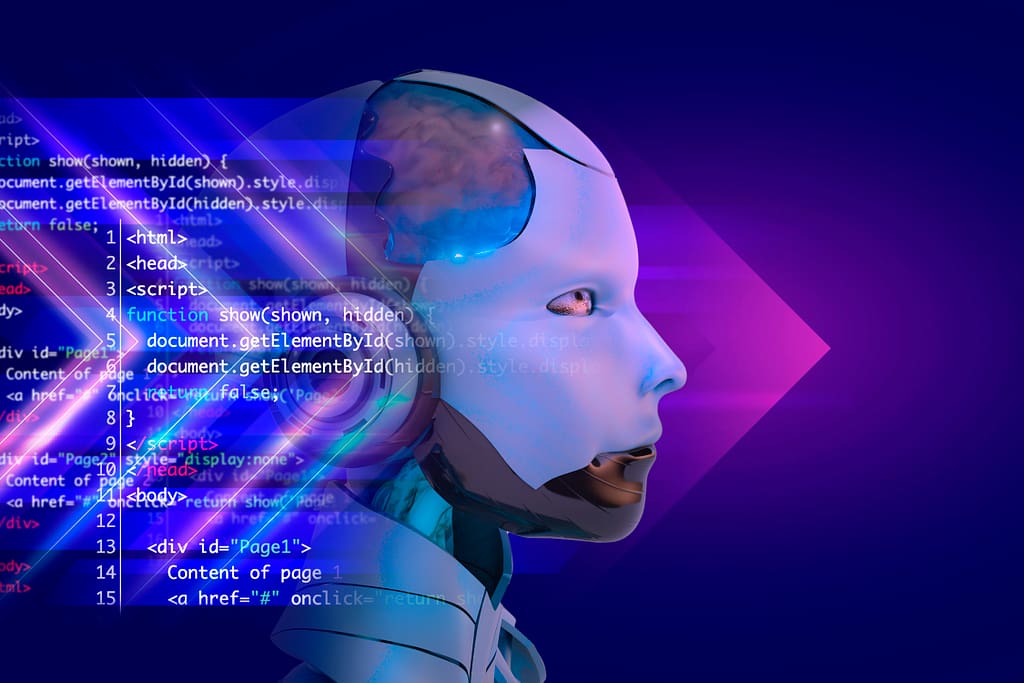Tiny Brains, Big Impact – Machine Learning On Embedded Systems
The world of technology is shrinking. Miniaturization has led to a surge in embedded systems – tiny computers embedded within everyday devices. From smartwatches monitoring your heart rate to self-driving cars navigating city streets, these compact marvels are transforming how we interact with the world. But what if these “tiny brains” could become even smarter? Enter machine learning (ML), a subfield of artificial intelligence that empowers machines to learn and improve without explicit programming.
This blog focuses on the exciting intersection of machine learning and embedded systems. We’ll explore the possibilities this marriage unlocks, the challenges it presents, and the future it holds.

The Rise of the Micro-Mind: Why Machine Learning on Embedded Systems?
Traditional embedded systems rely on pre-programmed rules to function. While effective for basic tasks, this approach struggles with complex, dynamic environments. Imagine a thermostat programmed to maintain a specific temperature. What if unexpected factors like sunlight or a malfunctioning window throw the system off? Here’s where machine learning shines.
Machine learning algorithms can “learn” from data, enabling embedded systems to adapt to changing situations. The thermostat, for instance, could analyze past temperature fluctuations and adjust settings in real time to maintain comfort. This opens doors for a new breed of intelligent embedded systems with the potential to:
- Optimize Performance: Machine learning can analyze sensor data to optimize resource usage – battery life in wearables, fuel efficiency in cars, and processing power in industrial control systems.
- Enhance User Experience: Embedded systems can learn user preferences and personalize interactions. Imagine a smart speaker that adapts to your voice commands or a refrigerator suggesting recipes based on your dietary habits.
- Enable Predictive Maintenance: By analyzing sensor data, embedded systems can predict potential failures and trigger maintenance alerts before breakdowns occur, preventing downtime and saving costs.
- Facilitate Anomaly Detection: Machine learning algorithms can identify unusual patterns in sensor data, helping embedded systems detect security breaches, equipment malfunctions, or even health issues in wearable devices.
The Hitch in the Tiny Gig: Challenges of Implementing Machine Learning on Embedded Systems
While exciting, integrating machine learning into embedded systems presents unique challenges:
- Resource Constraints: Embedded systems are power-hungry and have limited memory and processing power. Traditional machine learning models can be bulky and computationally expensive, making them unsuitable for these resource-constrained environments.
- Data Storage: Collecting and storing large datasets for training machine learning models can be impractical for embedded systems with limited storage capacity.
- Real-Time Constraints: Many embedded systems operate in real-time, requiring decisions to be made within strict timeframes. Complex machine learning models might not be able to deliver results fast enough.
- Security Concerns: Embedded systems are often connected to networks, making them vulnerable to security threats. Machine learning models themselves can be vulnerable to manipulation, raising security concerns.
The Tiny Tailor Shop: Adapting Machine Learning for Embedded Systems
Fortunately, researchers are constantly developing techniques to address these challenges. Here are some promising approaches:
- Model Compression and Quantization: Techniques like pruning and quantization can significantly reduce the size of machine learning models, making them suitable for resource-constrained embedded systems.
- Federated Learning: This approach allows multiple devices to collaboratively train a machine learning model without sharing their data directly. This protects data privacy and reduces the storage burden on individual devices.
- Edge Computing: Processing data closer to the source, on the device itself (edge) rather than sending it to the cloud, can minimize latency and optimize performance for real-time applications.
Custom Hardware Design: Creating specialized hardware architectures specifically designed for efficient machine learning computations can overcome processing limitations in embedded systems.
The Future is Tiny and Smart: Applications of Machine Learning on Embedded Systems
With continuous advancements, machine learning on embedded systems is ready to revolutionize various industries:
- Industrial Automation: Predictive maintenance and optimized production processes can significantly improve efficiency and reduce costs in factories.
- Internet-of-Things (IoT): Machine learning can be embedded in smart devices to enable intelligent automation, anomaly detection, and personalized user experiences.
- Wearable Technology: From personalized fitness coaching to early health risk detection, machine learning can unlock the full potential of wearables.
Autonomous Vehicles: Machine learning algorithms are crucial for self-driving cars to perceive their surroundings, navigate complex terrains, and make real-time decisions.
Building with Intelligence: Considerations for Embedded AI Products
We’ve explored the exciting world of machine learning on embedded systems, its potential to revolutionize various industries, and the challenges it presents. Now, let’s get into some crucial considerations when building products that leverage embedded AI:
1. Define the Scope:
- Identify the Problem: Clearly define the specific problem your embedded AI system aims to solve. Is it optimizing battery life in a wearable device, predicting equipment failure in an industrial setting, or enabling real-time anomaly detection in a security system? A well-defined problem helps determine the appropriate level of complexity for your AI model.
2. Resource Constraints are Real:
- Power Efficiency is Paramount: Embedded systems often operate on battery power or with limited energy budgets. Prioritize algorithms and models optimized for low power consumption. Techniques like model pruning and quantization can significantly reduce the computational footprint of your AI model.
3. Data is King (But Keep it Tiny):
- Train with Focused Data: Instead of massive datasets, focus on collecting high-quality, relevant data specific to your embedded AI application. This reduces storage requirements and helps the model learn efficiently from a smaller pool of information.
4. Real-Time Matters:
- Prioritize Latency-Aware Models: Many embedded systems operate in real-time environments. Choose algorithms that can deliver accurate results within the required time constraints. This might involve sacrificing some model complexity for faster inference speeds.
5. Security is Not Optional:
- Protect Against Adversarial Attacks: Embedded systems can be vulnerable to manipulation. Implement techniques to ensure the robustness of your AI model against adversarial attacks that could compromise its functionality.
6. Safety First, Always:
- Consider Fail-Safe Mechanisms: Embedded AI systems can be critical to safety-sensitive applications. Design fail-safe mechanisms to ensure safe operation even if the AI model encounters unexpected situations.
7. User Experience is Key:
- Explainable AI (XAI): In some cases, understanding how the AI model arrives at its decisions can be crucial. Explore Explainable AI (XAI) techniques to provide transparency and build trust with users.
8. Start Small, Scale Smart:
- Proof of Concept First: Begin with a minimal viable product (MVP) to validate your concept and gather real-world data. This allows for iterative development and ensures your embedded AI solution effectively addresses the target problem.
9. Continuous Learning is Essential:
- Over-the-Air (OTA) Updates: Enable your embedded AI system to adapt and improve over time. Develop mechanisms for over-the-air (OTA) updates that allow you to deploy improved models and enhance functionality without requiring physical device modifications.
10. Security Throughout the Lifecycle:
- Secure Development Practices: Implement secure coding practices throughout the development lifecycle to minimize vulnerabilities and protect your embedded AI system from cyberattacks.
By keeping these considerations in mind, you can leverage the power of machine learning to create intelligent embedded AI products that are efficient, secure, and deliver real value to users.
The Web Development Connection: Bridging the Gap Between Embedded AI and Users
While machine learning empowers embedded systems at the device level, web development plays a crucial role in bridging the gap between these intelligent devices and users. Here’s how:
- Data Visualization and User Interfaces: Web developers can design intuitive dashboards and user interfaces to visualize data collected by embedded AI systems. This allows users to monitor system performance, gain insights from sensor data, and interact with the AI in a meaningful way.
- Cloud Integration and Management: Web applications can act as a bridge between embedded AI devices and the cloud. Developers can create platforms for managing and monitoring a network of embedded AI devices remotely. This enables tasks like model updates, performance optimization, and centralized data analysis.
- Machine Learning Model Training and Management: Web interfaces can be built to facilitate the training and management of machine learning models for embedded systems. This allows developers and data scientists to upload data, train models, and deploy them onto devices seamlessly.
The Road Ahead: A Collaborative Journey
The marriage of machine learning and embedded systems is still in its early stages. Challenges remain, but the potential is vast. Success will require collaboration between various stakeholders:
- Hardware Manufacturers: Developing energy-efficient and powerful processors specifically designed for machine learning on embedded systems.
- Software Developers: Creating innovative tools and frameworks that make it easier to implement and optimize machine








